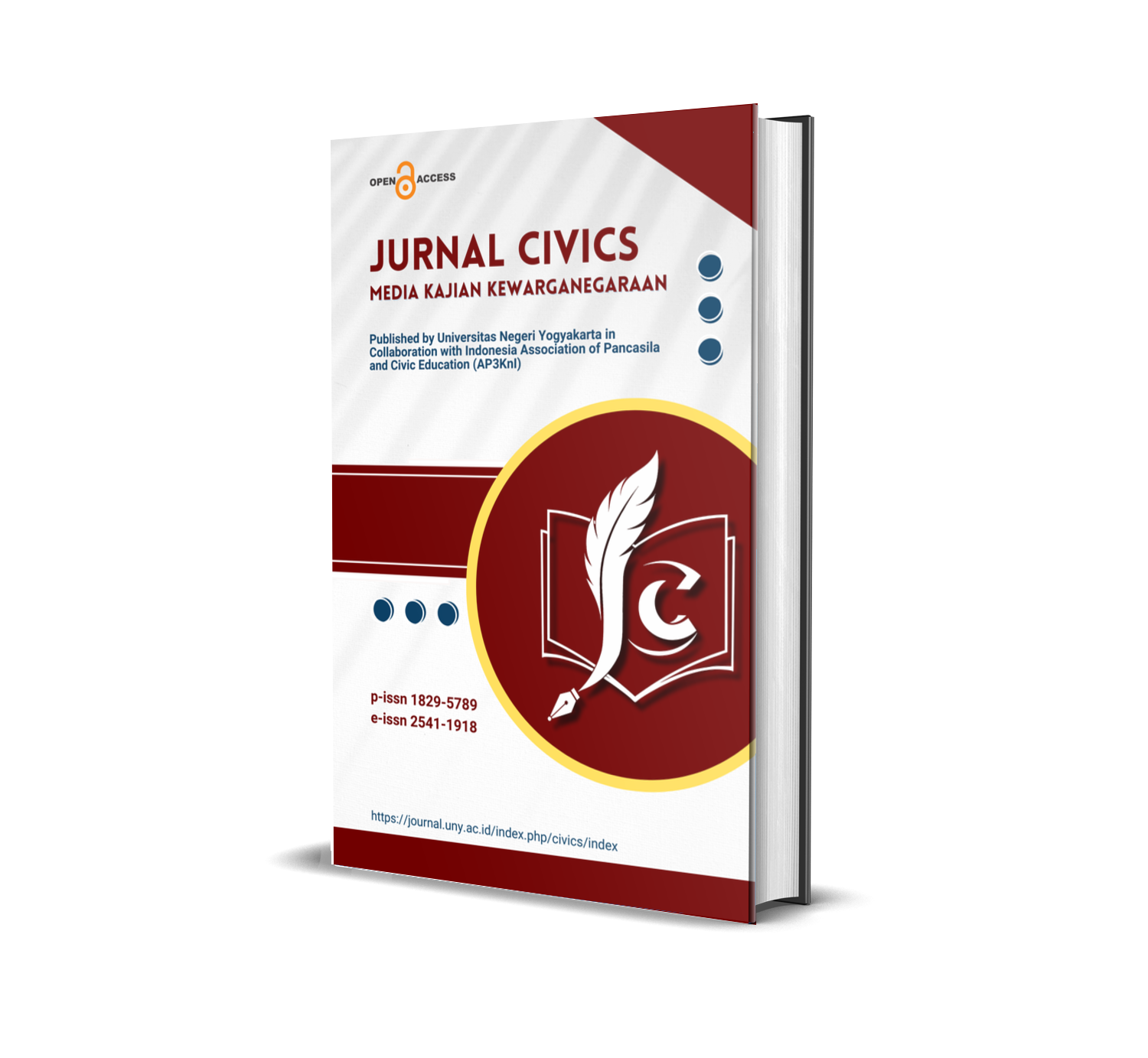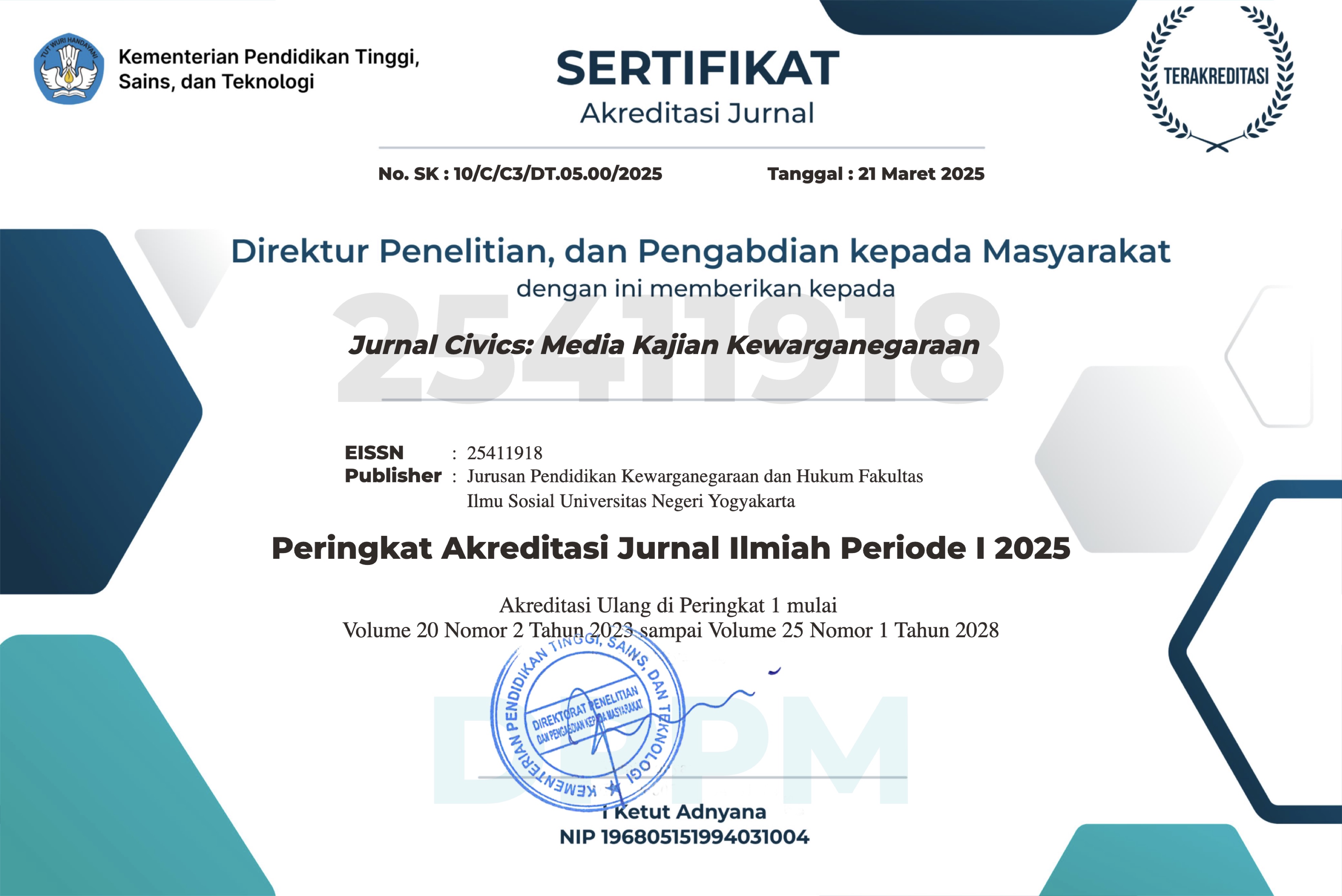Crime clustering in Yogyakarta: Data analysis 2016-2020 and state responsibility in crime
DOI:
https://doi.org/10.21831/jc.v21i2.73952Keywords:
clustering, crime, vulnerable areas, urbanAbstract
Crime often occurs. The crime rate in an area will be different from that of other areas according to the characteristics of the area. The clustering carried out in this study is based on the number of reported crime rates. This study aims to cluster crime-prone areas in Yogyakarta City so that they can identify areas to seek to handle them more effectively. The method of this research is ex post facto, which is a quantitative exploratory descriptive. Data was collected through the crime documentation of Yogyakarta City, which has 15 regional units and with crime rates from 2016 to 2020. Clustering is carried out by cluster analysis of the average linkage hierarchy method because the variables are less than 100, so multi-storey clusters are more appropriately used and return to the goal, namely, to identify crime-prone areas. The research results on the crime rate in Yogyakarta City based on data in each reported police unit for five years, namely from 2016, 2017, 2018, 2019, and 2020, show that the unit area is divided into 3 clusters consisting of clusters 1, 2, and 3. Each cluster has members, namely Cluster 1, Yogyakarta City Resort. Cluster 2 consists of Gondomanan, Ngampilan, Gedongtengen, Jetis, Tegalrejo, Wirobrajan, Kraton, Mantrijeron, Mergangsan, Kotagede, Danurajan and Pakualam. Cluster 3 consists of Umbulharjo and Gondokusuman. So, cluster 1, according to the total number of 5 years, is indeed the most, but for clusters 2 and 3, it is different, so in this clustering, the underlying is the similarity between the variables owned. Crime in the city is often encountered due to the heterogeneity of the community from various fields, so practical efforts must be made to deal with it.
References
Adisasmita, R. (2015). Teori pertumbuhan kota. Graha Ilmu.
Balbi, E., Cianfarra, P., Crispini, L., Tosi, S., & Ferretti, G. (2024). Hierarchical-agglomerative clustering analysis of geomorphic features applied to tectonic investigation of terrestrial planets: An example from Claritas Fossae, Mars. Icarus, 420, 1-15. https://doi.org/10.1016/j.icarus.2024.116197
Balocchi, C., Deshpande, S.K., George, E.I., & Jensen, S.T. (2023). Crime in Philadelphia: Bayesian Clustering with particle optimization. Journal of the American Statistical Association, 118(542), 818-829. https://doi.org/10.1080/01621459.2022.2156348
Bonger, A.W. (1995). Pengantar tentang kriminologi. PT. Pembangunan
BPS. (2021). Hasil Sensus Penduduk (SP2020) pada September 2020 mencatat jumlah penduduk sebesar 270,20 juta jiwa. Berita Resmi Statistik. https://www.bps.go.id/id/pressrelease/2021/01/21/1854/hasil-sensus-penduduk--sp2020--pada-september-2020-mencatat-jumlah-penduduk-sebesar-270-20-juta-jiwa-.html
BPS. (2021). Statistik kriminal 2021. Publikasi. https://www.bps.go.id/id/publication/2021/12/15/8d1bc84d2055e99feed39986/statistik-kriminal-2021.html
Burlian, P. (2016). Patologi sosial. Bumi Aksara
Hirschi, T. (1969). Causes of delinquency. University of California Press
Ingilevich, V., & Ivanov, S. (2018). Crime rate prediction in the urban environment using social factors. Procedia Computer Science, 136, 472-478. https://doi.org/10.1016/j.procs.2018.08.261
Jamaludin, N.A. (2017). Sosiologi perkotaan memahami masyarakat kota dan problematikanya. Pustaka Setia.
Juliati, Hermawan, W., & Firman, M. (2019). Pendidikan kewarganegaraan sebagai wahana untuk meningkatkan kesadaran hidup yang lebih baik di era global. Jurnal Civics: Media Kajian Kewarganegaraan, 16(1), 29-38. http://dx.doi.org/10.21831/jc.v16i1.23340
Júnior, R.V.S., Coelho, J.V.V., Cacho, N.A.A., & Araújo, D.S.A. (2024). A criminal macrocause classification model: An enhancement for violent crime analysis considering an unbalanced dataset. Expert Systems With Applications, 238, 1-22. https://doi.org/10.1016/j.eswa.2023.121702
Junjing, T. (2018). Research on the application of cluster analysis in criminal community detection. Journal of Physics: Conference Series, 1060, 1-7. https://iopscience.iop.org/article/10.1088/1742-6596/1060/1/012052
Lopes, A.B., & Nobre, M.J. (2024). Drugs, crime, and racial disparities in the homeless population gathered from a sample of police reports: Evidence from Brazil. Forensic Science International, 361, 1-7. https://doi.org/10.1016/j.forsciint.2024.112123
Maharrani, R. H., Abda’u, P.D., & Faiz, M.N. (2024). Clustering method for criminal crime acts using K-means and principal component analysis. Indonesian Journal of Electrical Engineering and Computer Science, 34(1), 224-232. http://doi.org/10.11591/ijeecs.v34.i1.pp224-232
Mansyur, C. (2005). Sosiologi masyarakat kota dan desa. Offset Printing.
Massa, R., & Fondevila, G. (2021). Criminal displacement in Mexico city’s metropolitan area: The case of kidnapping. International Journal of Law, Crime and Justice, 67, 1-10. https://doi.org/10.1016/j.ijlcj.2021.100479
Mooney, L.A., Knox, D., & Schacht, C. (2017). Understanding social problems. Cengage Learning
Nassaruddin, H.E. (2016). Kriminologi. Sukoharjo: Pustaka Setia.
Nurhayati, Kusdarini, E., & Hamimu, U. (2021). Moral development on inmates as the effeorts to prevent recidivists. Humaniora, 12(3), 173-178. https://doi.org/10.21512/humaniora.v12i3.7006
Pramanik, A., Das, A.K., Pelusi, D., & Nayak, J. (2023). An effective Fuzzy Clustering of crime reports embedded by a universal sentence encoder model. Mathematics, 11(611), 1-18. https://doi.org/10.3390/math11030611
Soetomo. (2015). Masalah sosial dan upaya pemecahannya. Yogyakarta: Pustaka Pelajar.
Spadon, G., et al. (2017). Behavioral characterization of criminality spread in cities. Procedia Computer Science, 108, 2537-2541. https://doi.org/10.1016/j.procs.2017.05.118
Supranto. (2004). Analisis multivariat arti dan interpretasi. Jakarta: Rineka Cipta.
Sypion-Dutkowska, N., Leitner, M., & Dutkowski, M. (2021). Impact of metropolization on the crime structure (case study of provincial capitals in Poland). Cities, 119, 1-13. https://doi.org/10.1016/j.cities.2021.103359
Widiatmaka, P. (2016). Kendala Pendidikan Kewarganegaraan dalam membangun karakter peserta didik di dalam proses pembelajaran. Jurnal Civics: Media Kajian Kewarganegaraan, 13(2), 188 -198. https://doi.org/10.21831/civics.v13i2.12743
Widyaningrum, R.T., & Hartini, S. (2022). Penanganan kejahatan jalanan oleh Kepolisian Resor Kota Yogyakarta di masa pandemi COVID-19. AGORA: Scientifics Journal of Pancasila and Civic Education, 11(2), 159-170.
Downloads
Published
How to Cite
Issue
Section
Citation Check
License
The authors agree to transfer the transfer copyright of the article to The Jurnal Civics: Media Kajian Kewarganegaraan effective if and when the paper is accepted for publication.
Authors and other parties are bound to the Creative Commons Attribution-NonCommercial-ShareAlike 4.0 International License for the published articles, legal formal aspect of journal publication accessibility refers to Creative Commons Attribution-NonCommercial-ShareAlike 4.0 International License (CC BY-NC-SA).










